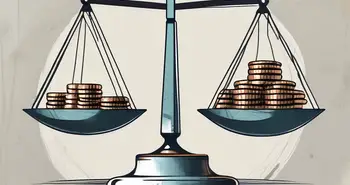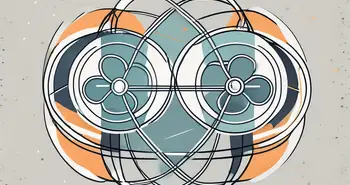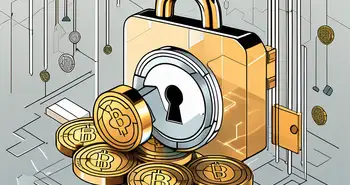What are Wrapped Tokens?

As an expert in the field of cryptocurrency and decentralized finance (DeFi), I am excited to present a comprehensive guide on the topic of wrapped tokens. In this article, we will delve into the basics of wrapped tokens, understand their technical aspects, explore their role in the world of DeFi, discuss different types of wrapped tokens, and weigh the pros and cons of using them. By the end of this guide, you will have a clear understanding of what wrapped tokens are and how they can be effectively utilized in various DeFi applications.
Understanding the Basics of Wrapped Tokens
Before we dive into the intricacies, let's start with the fundamentals. What exactly are wrapped tokens? Wrapped tokens are blockchain-based assets that represent other underlying assets. They are created by wrapping or tokenizing the value of an existing asset, such as Bitcoin or Ether, onto a different blockchain. The process involves locking the original asset in a smart contract, which then mints an equivalent amount of wrapped tokens.
The purpose and function of wrapped tokens are two-fold. Firstly, they enable the seamless transfer of assets between different blockchains. By wrapping an asset, it becomes compatible with the decentralized applications (dApps) and smart contracts running on the target blockchain. This interoperability opens up a world of possibilities for users, allowing them to utilize assets across multiple platforms and ecosystems.
Secondly, wrapped tokens bring liquidity to DeFi platforms by allowing users to collateralize their assets and participate in various lending, borrowing, and yield farming protocols. This means that individuals can leverage their wrapped tokens to access additional financial services and generate returns on their holdings. It's like unlocking the potential of your assets and putting them to work for you.
Now, let's talk about some key considerations when it comes to engaging with wrapped tokens. As an expert tip, I highly recommend considering the reputation and security of the wrapping protocol before getting involved. Look for protocols that have undergone multiple audits, have a strong community backing, and have demonstrated their ability to maintain the peg of the wrapped token to the underlying asset.
Additionally, it's important to understand the mechanism behind the pegging process. The value of a wrapped token is typically pegged to the value of the underlying asset it represents. This ensures that one wrapped token is always equivalent to a specific amount of the original asset. However, maintaining this peg requires careful management and monitoring by the wrapping protocol. It's crucial to choose protocols that have a proven track record of effectively managing the peg to avoid any potential discrepancies or losses.
Lastly, keep an eye on the liquidity and trading volume of the wrapped token. Higher liquidity and trading volume indicate a healthy market for the token, making it easier for users to buy, sell, and trade their wrapped assets. This is especially important if you plan to actively engage with the wrapped token in DeFi protocols or other trading activities.
By understanding the basics of wrapped tokens and considering these key factors, you can navigate the world of wrapped assets with confidence and make informed decisions about their usage. Remember, wrapped tokens offer exciting opportunities for asset interoperability and DeFi participation, but it's always important to do your due diligence and choose reliable protocols.
The Technical Aspects of Wrapped Tokens
Now that we have a grasp of the basics, let's explore the technical aspects of wrapped tokens. To understand how wrapped tokens work, it's essential to comprehend the underlying blockchain infrastructure. Wrapped tokens typically rely on smart contracts, which are self-executing contracts with the terms of the agreement directly written into code.
When wrapping a token, the process involves sending the original asset to a custodian, who will then lock it in a smart contract. The smart contract mints an equivalent amount of wrapped tokens, which can be freely traded and transferred on the target blockchain. The custodian typically holds the original asset in a secure manner, ensuring that the wrapped tokens can be redeemed for the underlying asset at any time.
The Role of Wrapped Tokens in DeFi
Wrapped tokens play a crucial role in the rapidly expanding DeFi ecosystem. One of the primary benefits is their ability to bring liquidity to decentralized exchanges (DEXs). By wrapping assets such as Bitcoin or Ether, users can trade them directly on DEXs without the need for centralized exchanges. This opens up a world of possibilities for seamless and decentralized trading.
Furthermore, wrapped tokens are also instrumental in yield farming, a popular DeFi strategy where users provide liquidity to protocols in exchange for attractive returns. By wrapping their assets, users can easily participate in yield farming protocols and earn rewards in the form of additional tokens.
As an expert, let me share a personal story to illustrate the power of wrapped tokens in DeFi. A few months ago, I decided to explore yield farming and interacted with a popular DeFi protocol that utilized wrapped tokens. By utilizing my wrapped assets, I was able to participate in various yield farming strategies and generate a substantial passive income. This experience reinforced my belief in the potential of wrapped tokens and their ability to revolutionize the financial landscape.
The Different Types of Wrapped Tokens
Now let's shift our focus to the different types of wrapped tokens available in the market today. The two most prominent examples are Wrapped Bitcoin (WBTC) and Wrapped Ether (WETH).
Wrapped Bitcoin (WBTC)
Wrapped Bitcoin (WBTC) is a tokenized version of Bitcoin that runs on the Ethereum blockchain. It enables Bitcoin holders to gain exposure to the Ethereum ecosystem and participate in DeFi applications utilizing their Bitcoin holdings. WBTC has gained significant popularity, with many DeFi platforms integrating it as a core asset.
Wrapped Ether (WETH)
Wrapped Ether (WETH) is a tokenized version of Ether that conforms to the ERC-20 standard. Similar to WBTC, WETH allows users to utilize their Ether holdings within the Ethereum DeFi ecosystem. It has become the standard form of Ether used in decentralized exchanges and lending platforms.
The Pros and Cons of Using Wrapped Tokens
Now that we have explored the various aspects of wrapped tokens, let's analyze the pros and cons of utilizing them in the DeFi landscape.
Advantages of Wrapped Tokens
- Enhanced liquidity: Wrapped tokens bring liquidity to decentralized exchanges, allowing users to trade assets seamlessly.
- Asset interoperability: By wrapping assets, they become compatible with different blockchains, expanding their utility and value.
- Participation in DeFi: Wrapped tokens enable users to participate in various DeFi protocols, including lending, borrowing, and yield farming.
Potential Risks and Drawbacks
- Custodial risks: Users need to trust the custodian holding the underlying asset, as custodians control the redemption process.
- Smart contract vulnerabilities: As wrapped tokens rely on smart contracts, any vulnerabilities in the code can lead to potential risks.
- Centralization concerns: Despite operating within the decentralized DeFi ecosystem, wrapped tokens rely on centralized custodians.
FAQs
Let's revisit some of the main points discussed in this comprehensive guide through frequently asked questions:
What are wrapped tokens?
Wrapped tokens are blockchain-based assets that represent other underlying assets. They are created by tokenizing the value of an existing asset onto a different blockchain.
How do wrapped tokens work?
Wrapped tokens are created by locking the original asset in a smart contract, which then mints an equivalent amount of wrapped tokens. The wrapped tokens can be freely traded and transferred on the target blockchain.
What is the role of wrapped tokens in DeFi?
Wrapped tokens bring liquidity to decentralized exchanges, allow users to participate in yield farming, and enable seamless asset transfer between different blockchains.
What are the different types of wrapped tokens?
Two prominent examples of wrapped tokens are Wrapped Bitcoin (WBTC) and Wrapped Ether (WETH).
What are the advantages of using wrapped tokens?
Wrapped tokens offer enhanced liquidity, asset interoperability, and participation in various DeFi protocols.
What are the potential risks and drawbacks of using wrapped tokens?
Custodial risks, smart contract vulnerabilities, and centralization concerns are some of the potential risks associated with using wrapped tokens.
In conclusion, wrapped tokens have emerged as a vital component of the DeFi ecosystem. They provide liquidity, enable asset interoperability, and open up a world of possibilities for decentralized finance applications. By understanding the basics, technical aspects, and pros and cons of wrapped tokens, you are well-equipped to navigate the rapidly evolving landscape of decentralized finance.
Ready to take your DeFi experience to the next level with the insights you've gained on wrapped tokens? Look no further than Morpher, the revolutionary trading platform that leverages blockchain technology to transform investing. With Morpher, you can trade a vast array of assets, from cryptocurrencies to stocks and even unique markets like NFTs, without the burden of fees or liquidity constraints. Embrace the power of fractional investing, short selling, and up to 10x leverage to maximize your trading strategies. Plus, enjoy the safety and control of a non-custodial Morpher Wallet. Don't miss out on this unique trading experience—sign up now and claim your free sign-up bonus to start trading the Morpher way!

Disclaimer: All investments involve risk, and the past performance of a security, industry, sector, market, financial product, trading strategy, or individual’s trading does not guarantee future results or returns. Investors are fully responsible for any investment decisions they make. Such decisions should be based solely on an evaluation of their financial circumstances, investment objectives, risk tolerance, and liquidity needs. This post does not constitute investment advice.

Painless trading for everyone
Hundreds of markets all in one place - Apple, Bitcoin, Gold, Watches, NFTs, Sneakers and so much more.

Painless trading for everyone
Hundreds of markets all in one place - Apple, Bitcoin, Gold, Watches, NFTs, Sneakers and so much more.









